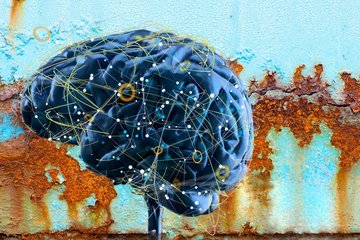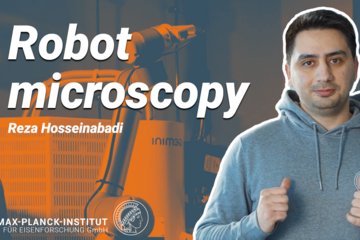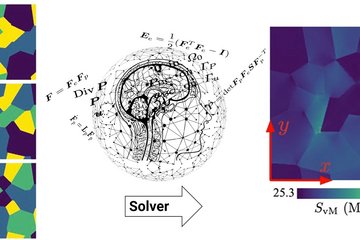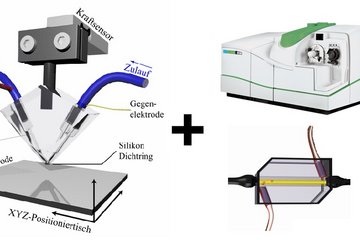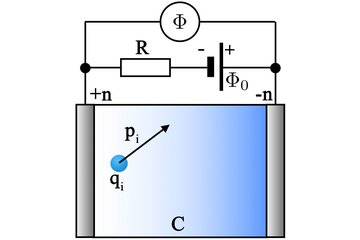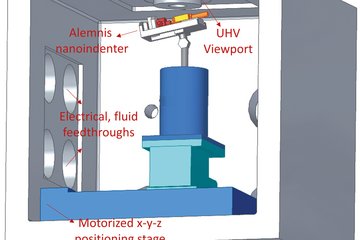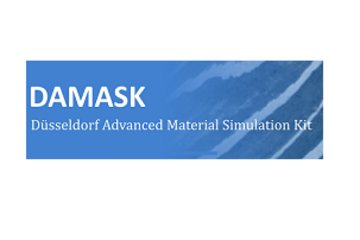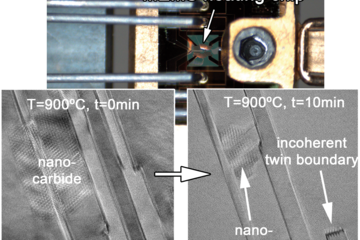All genres
1301.
Talk
Size and orientation effects on the elasto-plastic transition and deformation mechanism of twinning-induced plasticity steel micro-pillars. MSE 2016 Conference , Darmstadt, Germany (2016)
1302.
Talk
Crystal Plasticity Simulations on Real Data: Towards Highly Resolved 3D Microstructures. 26th International Workshop on Computational Mechanics of Materials - IWCMM 26, Tomsk, Russia (2016)
1303.
Talk
Spatially Resolved Through-Process Modelling. MSE 2016, Darmstadt, Germany (2016)
1304.
Talk
Correlative Atom Probe Microscopy: Recent Progress and Possibilities. European APT Workshop, St Catherine College, Oxford, UK (2016)
1305.
Talk
Precipitation Reaction in a Maraging Steel during Laser Additive Manufacturing triggered by Intrinsic Heat Treatment. Materials Science and Engineering Congress, Darmstadt, Germany (2016)
1306.
Talk
Kristallplastizität in martensitischen Mikrostrukturen. 4. Jahrestreffens des DGM-Regionalforums Rhein-Ruhr, Hydro Aluminium Bonn, Bonn, Germany (2016)
1307.
Talk
Multi-probe tracking of nano-scale tempering reactions in low-carbon lath martensite. 9th Pacific Rim International Conference on Advanced Materials and Processing (PRICM 9 ), Kyoto, Japan (2016)
1308.
Talk
New multi-probe experimental approaches to study complex lath martensite. Seminar at Department of Mechanical Engineering, Kyushu University, Fukuoka, Japan (2016)
1309.
Talk
Atoms, ions, electrons: simulated, measured and manipulated. Workshop on Scientific Directions for Future Transmission Electron Microscopy, Jülich, Germany (2016)
1310.
Talk
Chemo-Mechanics at Lattice Defects: from Mechanisms to Bulk Alloys. Gordon Research Conference on Thin Film & Small Scale Mechanical Behavior, Lewiston, ME, USA (2016)
1311.
Talk
Defect Segregation studied by Correlative Atom Probe Tomography and Electron Microscopy. Japan-Germany Joint Symposium on Advanced Characterization of Nanostructured Materials for Energy and Environment, Conference Center Mutterhaus, Düsseldorf, Germany (2016)
1312.
Talk
Atomic diffusion induced degradation in bimetallic layer coated cemented tungsten carbide. APT & M 2016 Conference, Gyeongju, Korea (2016)
1313.
Talk
Integrated experimental and simulation analysis of lattice defects and micromechanics in steels. Materials Modeling Colloquium, Universität Stuttgart, Stuttgart, Germany (2016)
1314.
Talk
Segregation engineering for self-organized nanostructuring of materials - from atoms to properties? APT&M 2016 - Atom Probe Tomography & Microscopy 2016 (55th IFES) , Gyeongju, South Korea (2016)
1315.
Talk
Numerically Robust Spectral Methods for Crystal Plasticity Simulations of Heterogeneous Materials. ECCOMAS Congress 2016, Crete, Greece (2016)
1316.
Talk
Study of the formation and effect of nano-sized Cu-Sn-Se compounds in Cu2ZnSnSe4 thin-films on solar cell efficiency. Atom Probe Tomography & Microscopy (APT&M) , Gyeongju, South Korea (2016)
1317.
Talk
Micromechanics using spectral method: Modelling of interface decohesion in polycrystalline microstructures. PETSc User Meeting, Vienna, Austria (2016)
1318.
Talk
An ab-initio prediction of the off-stoichiometry of Fe–Mn–Al–C κ carbides. CALPHAD XLV, Awaji Island, Hyogo, Japan (2016)
1319.
Talk
From grains to atoms: ping-pong between experiment and simulation for understanding microstructure mechanisms. Res Metallica Symposium, Department of Materials Engineering, KU Leuven, Leuven, The Netherlands (2016)
1320.
Talk
Integrated experimental and simulation analysis of dual phase steels. Workshop on Possibilities and Limitations of Quantitative Materials Modeling and Characterization 2016, Bernkastel, Germany (2016)


